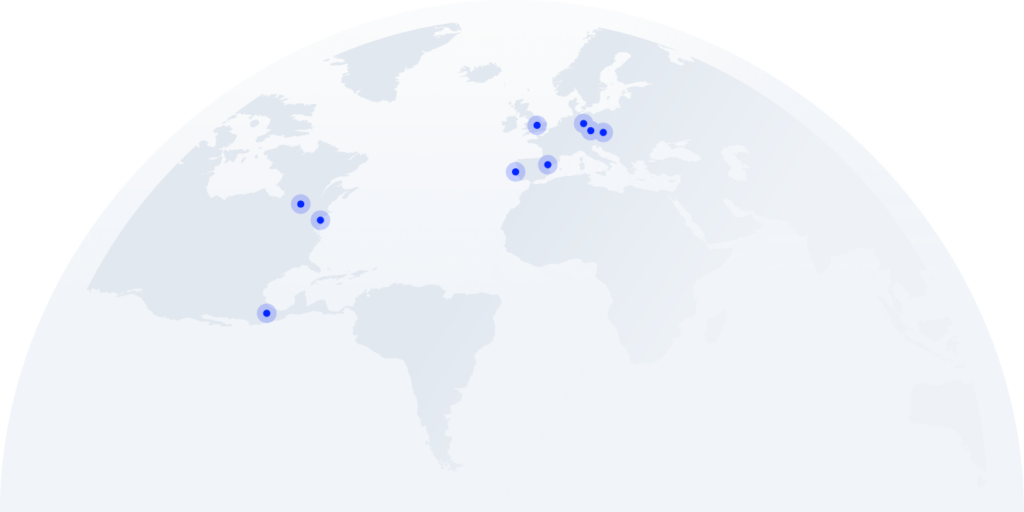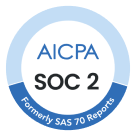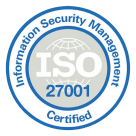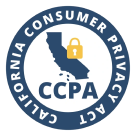
Repetitive service tasks consume a significant portion of the workday, with studies indicating that 30% or more of current work activities can be automated using available technologies.
Automated phone calling systems address this challenge by managing inbound and outbound calls through smart triggers, pre-recorded prompts, and logic-based call flows—eliminating the need for manual dialing.
Think of it as a self-operating switchboard: calls are answered, routed, recorded, and followed up—consistently and efficiently. What once required a full team now operates seamlessly in the background.
Importantly, automation doesn’t equate to impersonal interactions. When implemented thoughtfully, an automated phone calling system enhances responsiveness and ensures timely follow-ups, all while maintaining a human touch.
Key Takeaways:
- Automated phone calling systems reduce manual workload by handling routine inbound and outbound calls with pre-set logic and messaging.
- They improve efficiency and speed by routing, answering, and logging calls without agent involvement—cutting time and increasing output.
- Platforms like CloudTalk support use cases like appointment reminders, lead gen, surveys, and queue callbacks—without sacrificing customer experience.
- Far from sounding robotic, well-built automated calls feel timely and useful—helping businesses scale communication without losing the human touch.
Still dialing by hand? It’s slowing you down.
What Is an Automated Phone Calling System?
An automated phone calling system is software that places or receives phone calls without manual dialing. Instead of requiring agents to initiate or answer each call, the system handles the process using pre-configured scripts, call flows, and rules. Messages can be pre-recorded or generated dynamically using text-to-speech, and responses can trigger next steps automatically.
These systems come in many forms—from simple outbound robocalls to complex setups that manage large volumes of both inbound and outbound traffic. For example, a healthcare provider might use automated voice calls to remind patients of appointments, while a sales team might rely on an automated calling system to power through lead lists with minimal downtime.
In both cases, the goal is the same: deliver consistent, timely communication without tying up human resources. Whether you’re scaling outbound efforts or improving how you handle inbound inquiries, an automated phone calling system adds efficiency where it matters most.
Types of Automated Phone Calling Systems
Not all automated phone systems serve the same purpose. Some are built to manage incoming calls, others to drive outbound campaigns, and many do both. The right solution depends on your communication goals—whether you’re fielding support requests, following up on leads, or sending reminders at scale.
The two core categories are:
- Inbound systems that respond to and route incoming calls based on caller input or preset rules.
- Outbound systems that automatically place calls to deliver messages or connect to a live agent.
Each plays a different role in streamlining workflows, improving response times, and minimizing manual effort.
Inbound Automated Phone Calling Systems
Inbound systems are designed to handle calls that come into your business. They help route callers to the right department, answer common questions, or log voicemails when agents aren’t available—all without human intervention.
A typical example is Interactive Voice Response (IVR), which lets callers navigate a menu using voice commands or keypad inputs. Combined with intelligent call routing, these systems can reduce wait times and increase first-call resolution. When no agents are available, the system may trigger a voicemail workflow that logs the message and alerts the right team.
These tools are essential for customer service teams managing high volumes of incoming traffic. An effective inbound system doesn’t just handle more calls—it improves the caller experience. That’s why many teams invest in robust customer service phone systems that integrate automation at the front line.
Outbound Automated Phone Calling Systems
Outbound systems are built to initiate calls automatically—either to deliver a pre-recorded message or to connect a live agent once someone answers. These tools are critical for sales, collections, appointment reminders, and other proactive communication strategies.
There are several common types:
- Power dialers place calls from a contact list one after another, minimizing idle time between conversations. Ideal for high-volume outreach with human agents.
- Predictive dialers use algorithms to call multiple numbers at once and only connect agents when a live person picks up. This maximizes efficiency but requires a sizable call team to avoid dropped connections.
- Robocalls deliver automated messages without involving a live agent—commonly used for alerts, surveys, or political outreach.
Each type has its own strengths, depending on the goal. Teams focused on lead generation or campaign follow-ups often turn to dialers for cold calling to streamline and accelerate outbound efforts.
When combined with CRM data and call tracking, outbound systems don’t just automate calls—they turn outreach into a repeatable, scalable workflow.
Use CloudTalk’s Dialer to connect faster, follow up quicker, and close more.
How Are Automated Call Systems Used?
Automated call systems are built to take over routine communication tasks that traditionally required a live agent. By using pre-set logic, voice prompts, and integrations with tools like CRMs or calendars, these systems help teams reach more people with less effort—while keeping timing, tone, and messaging consistent.
They’re used across industries, from healthcare to e-commerce to real estate. Below are six of the most common and impactful applications.
Appointment Reminders
Medical offices, beauty salons, and service providers use automated calls to confirm upcoming appointments. The system can notify clients, request confirmations, and reduce no-shows—without anyone making a manual call.
Customer Feedback & Surveys
After a service interaction, an automated system can place a follow-up call asking for feedback or guiding customers through a quick satisfaction survey. This streamlines post-service engagement and feeds into broader CX analytics.
Lead Qualification
Sales teams use outbound systems to contact leads, qualify interest using interactive voice prompts, and route hot prospects directly to a rep. With a CRM-integrated call center, data is logged automatically and follow-ups are triggered instantly.
Emergency Alerts
Schools, municipalities, and utility companies rely on robocalls to quickly broadcast time-sensitive information—like weather warnings, service outages, or urgent updates. These systems ensure wide reach in minimal time.
Payment & Billing Reminders
Automated phone calls are commonly used by banks, telecoms, and subscription services to remind customers of upcoming payments or past-due invoices. Voice prompts can guide recipients to take action or transfer them to a billing department.
Agent Callbacks & Queue Management
For busy customer service lines, automated systems offer callbacks instead of holding. Callers can opt in, hang up, and receive an automatic return call when an agent becomes available—improving satisfaction and reducing drop-offs.
Efficiency isn’t a buzzword—it’s a strategy.
Key Features of Automated Calling System Software
A modern calling system is more than a voice on the line—it’s an orchestration engine. These features work together to save time, remove friction, and make your conversations smarter at scale.
Power Dialer
Think of the Power Dialer as a productivity turbocharger for outbound teams. Instead of dialing numbers manually, agents move seamlessly from one answered call to the next—no pauses, no distractions. It’s built for volume, but fine-tuned for focus.
Call Flow Designer
Call Flow Designer is your visual command center for every incoming call. You’re not just routing callers—you’re designing an experience, step by step, with logic, rules, and branches that feel intuitive instead of frustrating. It’s like building a customer journey—only with phone lines instead of webpages.
Interactive Voice Response (IVR)
An automated voice answers your calls, but not with robotic coldness—it’s trained to guide, sort, and respond with logic. IVR lets customers self-serve or reach the right agent in seconds, which means fewer bottlenecks and happier first impressions.
Skill-Based Routing
No one likes getting bounced between agents. With Skill-Based Routing, calls go to the person best equipped to solve the problem—whether that’s language, location, or expertise. It’s intelligent matchmaking for faster resolutions.
Workflow Automation
Automated calls are just the beginning. This feature links every outcome—like a missed call or a successful sale—to a predefined next step: update the CRM, send a follow-up SMS, alert a rep. Workflow Automation is like building a domino chain for your operations, with every tile falling into place automatically.
Call Monitoring
Training doesn’t stop after onboarding. With real-time listening and whisper features, managers can coach reps mid-call or quietly observe for quality. In a nutshell, Call Monitoring is a safety net.
Real-Time Dashboard
Your call center is alive—and this dashboard shows its heartbeat. Track call volumes, agent availability, queue lengths, and more, all in real time. Real-Time Dashboard is the control tower your team didn’t know it needed.
Call Recording
Every call becomes a record—of success, of mistakes, of insights worth repeating. With searchable recordings stored securely, teams can revisit conversations for QA, coaching, or compliance. It’s memory on-demand.
Call Transcription
Why replay a call when you can scan it like a document? Call Transcription turns speech into searchable text, ideal for follow-ups, dispute resolution, and feeding your AI with structured insight.
CRM Integration
Conversations shouldn’t live in silos. CloudTalk connects directly to your CRM so every call, note, and outcome flows into the tools your team already uses. It’s what turns talk into action—and context into conversions.
Automated Call Systems vs. Auto Phone Systems
Automated call systems and auto phone systems are often used interchangeably—but both refer to tools that place outbound calls without manual dialing. The key difference isn’t in the label, but in how they work behind the scenes.
Understanding the various dialer types—like power, predictive, progressive, and preview—can help your team choose the right tool for volume, speed, and customer experience.
Power Dialer
A Power Dialer automatically dials numbers from a list, connecting agents only when a live person answers. This reduces idle time and increases the number of conversations agents can have. It’s particularly effective for teams aiming to maximize talk time without compromising call quality.
Predictive Dialer
Predictive Dialers use algorithms to anticipate when an agent will be available and start dialing multiple numbers simultaneously. When a call is answered, it’s routed to the next available agent. This system is ideal for high-volume call centers focused on maximizing agent productivity.
Progressive Dialer
Progressive Dialers automatically dial the next number on a list only after an agent finishes the previous call. This ensures that agents are always ready to engage, reducing the chances of dropped calls. It’s suitable for campaigns where maintaining a steady call flow is essential.
Preview Dialer
Preview Dialers provide agents with information about the next contact before dialing. This allows for personalized conversations, as agents can review customer history and tailor their approach. It’s best for scenarios where understanding customer context is crucial.
How to Choose the Right Automated Phone System
There’s no one-size-fits-all solution when it comes to automation. The right system depends on your team’s size, goals, and how you plan to use it. Here’s what to evaluate before making a decision:
- Purpose: Are you looking to scale outbound sales, improve inbound support, or handle both? Clarifying your main use case helps you decide between a power dialer, IVR setup, or a hybrid call center solution.
- Features: Look for tools that match your workflow—like call routing, voicemail drops, CRM integrations, or call recording. Bonus if the platform offers real-time analytics and AI-powered summaries.
- Pricing: Some systems charge per seat, others per minute. Make sure you understand the total cost of ownership, especially if you’re running large campaigns or using international numbers.
- Performance & Scalability: Choose a platform that can grow with your team. Look for uptime guarantees, global coverage, and advanced features like smart dialers or queue management.
- Ease of Use: Complex setups slow teams down. Prioritize intuitive dashboards and no-code call flow builders so admins and agents can make changes without IT.
- Compliance & Security: If you’re working in finance, healthcare, or the EU, make sure your vendor supports local regulations, opt-out mechanisms, and GDPR-compliant practices.
You’ve seen what automation can do. Now see what it can do for you.
Put Your Calls on Autopilot—Without Losing the Human Touch
You’ve seen what an automated calling system can do—now imagine it tailored to your business. No more dropped leads, overwhelmed reps, or missed opportunities. Just a system that handles volume, respects customer time, and gives your team leverage.
It’s not about replacing people. It’s about amplifying their potential.
If better reach, faster response times, and data-backed conversations are on your roadmap, automation isn’t a nice-to-have. It’s the next move.
Curious how automation fits into your call flow? Let’s show you what it can really do.
Sources:












